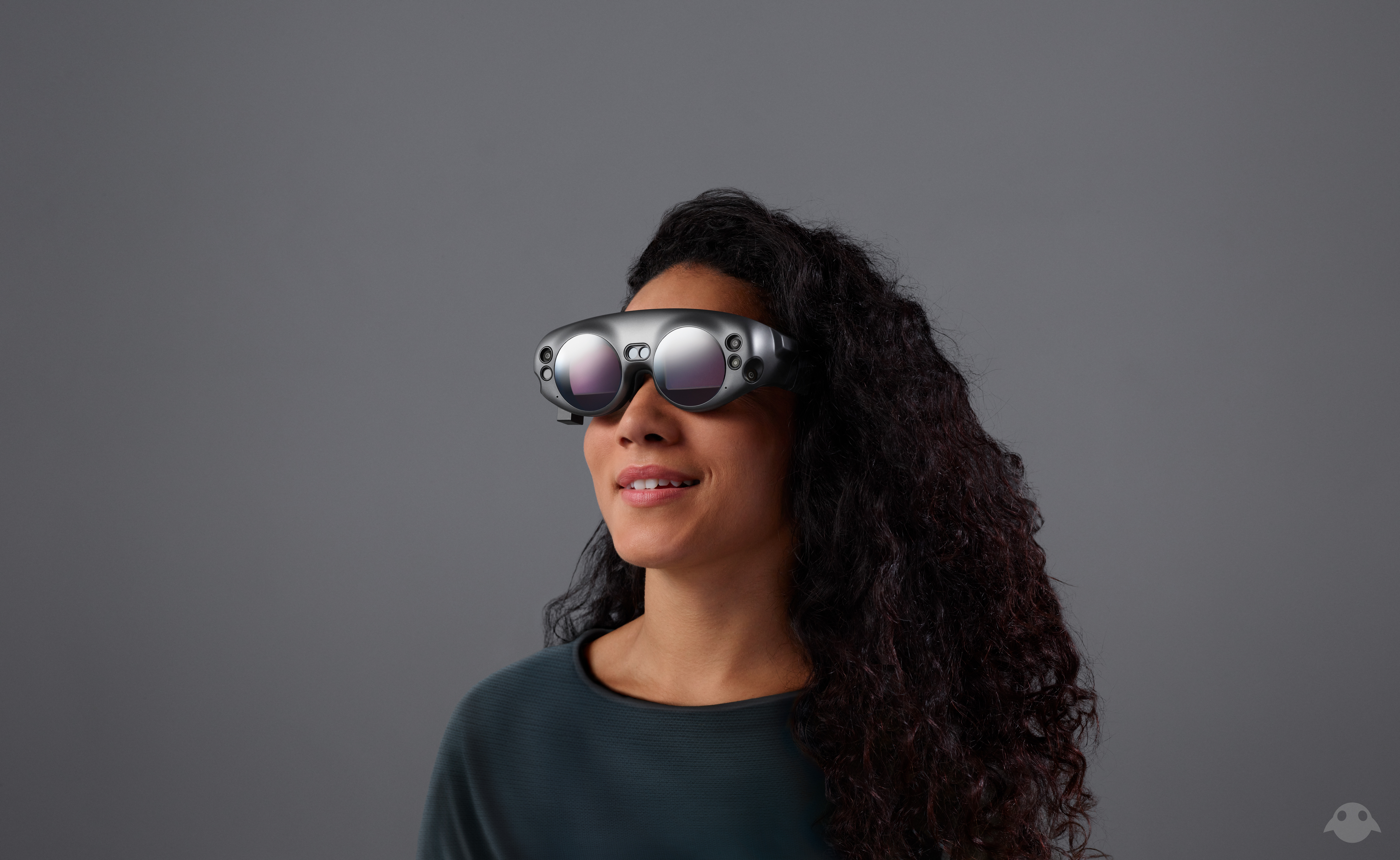This Is Magic Leap’s AR Headset, Coming 2018

Magic Leap, an augmented-reality startup that has raised close to $2 billion without even publicly demonstrating a product, is pulling back the curtains a bit—on its website, at least. The company now says it will release a headset next year for developers, though it still won’t divulge how much it will cost or when, exactly, it will ship.
On a new version of its website unveiled Wednesday, Magic Leap showed images of an almost retro-looking pair of black, goggle-like glasses called Magic Leap One, which it says will mix digital images with reality in a way that appears extremely realistic and is comfortable to view for a long time. As in the past, though, the company doesn’t get too specific about how this will work, beyond saying it’s using technology involving the re-creation of light fields, which are the patterns created when light bounces off an object.
Magic Leap, which is based far from most tech hubs in South Florida, has been working secretively on its headset since 2011; a demo of the technology I saw in late 2014 included impressively rendered monsters that seemed to exist in the room with me. Those images were created by large machines rather than a head-mounted display, however, and shrinking the technology down to a comfortable, wearable size is a daunting task, even with the company’s funding.

It’s still unclear how big or heavy Magic Leap One will be. It will not be tethered to a computer, but it will need to connect to a device called a Lightpack for computing and power.
The company says it will have sensors that allow it to take stock of the world around you in order to properly place digital objects in it, like a virtual pet on your desk, for instance—something that sounds similar to what Apple and Google are enabling developers to do with their AR tools for iPhones and Android-running smartphones. Magic Leap also says the headset will remember physical details of your environment, like walls and objects, so that digital objects you put in specific places while wearing the headset (say, a virtual computer display on a desk in your office) will still be there the next time you put on the headset in the same room.
The company says users will be able to interact with Magic Leap One by using their voices and gestures, and that the headset will also track head pose and eye position. There will be a handheld remote as well.
Additionally, Magic Leap plans to offer software tools for developers to start making apps for the headset early next year.
The augmented- and virtual-reality landscape has grown a lot in the years since Magic Leap began its work. There are now a number of consumer-geared virtual-reality headsets on the market, though they’re still very much a niche product. A handful of AR headsets such as Microsoft’s HoloLens and Meta’s Meta 2 have been released, but they are still mainly geared toward developers, and they are still quite limited in terms of how well they work and what you can do with them (at this point, Magic Leap is not the only company working on light-field technology for AR, however). Smartphone-based AR, meanwhile, has greatly improved.
Magic Leap is often reluctant to speak to journalists, and spokeswoman Julia Gaynor had no comment beyond the details shown online. CEO and founder Rony Abovitz seems to prefer occasionally promising Magic Leap details via social media—on December 12, for instance, he said that some “fun and cool stuff” might be coming the following week.
Deep Dive
Humans and technology
Building a more reliable supply chain
Rapidly advancing technologies are building the modern supply chain, making transparent, collaborative, and data-driven systems a reality.
Building a data-driven health-care ecosystem
Harnessing data to improve the equity, affordability, and quality of the health care system.
Let’s not make the same mistakes with AI that we made with social media
Social media’s unregulated evolution over the past decade holds a lot of lessons that apply directly to AI companies and technologies.
Stay connected
Get the latest updates from
MIT Technology Review
Discover special offers, top stories, upcoming events, and more.